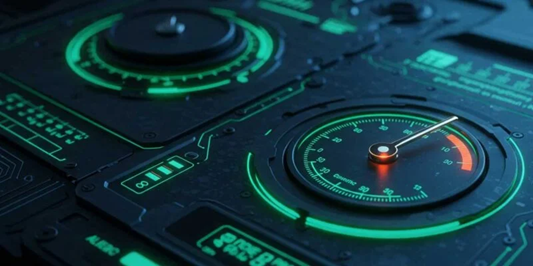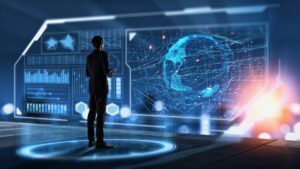Introduction
The word “kalibraatio” comes from the Finnish term for calibration—a process that ensures the accuracy, consistency, and reliability of measurements, instruments, and systems. In science, industry, technology, and even daily life, precise measurement is the backbone of progress. Whether it’s a laboratory balance, a medical device, or an industrial sensor, the process of kalibraatio guarantees that the numbers we rely on are meaningful and trustworthy.
In this article, we will explore what kalibraatio means, why it matters, the step-by-step process, common methods, and real-world applications across different fields.
1. What is Kalibraatio?
At its core, kalibraatio (calibration) is the process of comparing an instrument or system against a standard of known accuracy to detect and correct deviations.
- Example: If a thermometer consistently shows 99°C when boiling water is at 100°C, calibration helps identify and adjust that discrepancy.
- Goal: To ensure the instrument measures within acceptable accuracy limits.
It is important to note that calibration does not always involve making adjustments. Sometimes it simply records how much an instrument deviates, so users know the level of error.
2. Why is Kalibraatio Important?
A. Accuracy and Reliability
Without proper calibration, measurements can drift over time due to wear, environmental conditions, or aging components. Regular calibration ensures data remains trustworthy.
B. Safety and Compliance
- In industries like aviation, healthcare, and nuclear power, even small measurement errors can have life-threatening consequences.
- Many regulations and international standards (such as ISO/IEC 17025) require strict calibration procedures.
C. Cost Savings
Uncalibrated instruments may lead to product defects, wasted resources, or failed inspections. Accurate calibration prevents unnecessary losses.
D. Global Trade and Standardization
Calibration ensures measurement compatibility across borders. For example, a kilogram in Finland must mean the same as a kilogram in Japan or the US.
E. Reputation and Trust
For laboratories, manufacturers, and service providers, having calibrated instruments builds credibility with clients and auditors.
3. The Kalibraatio Process: Step by Step
Though details vary by industry, the general calibration process follows a structured approach:
Step 1: Preparation
- Identify the instrument to be calibrated.
- Review manufacturer specifications and required accuracy.
- Ensure the instrument is clean and in good working condition.
Step 2: Reference Standards
Use a reference standard that has a higher level of accuracy and is itself traceable to a national or international standard (e.g., NIST in the US, VTT MIKES in Finland).
Step 3: Comparison
- Measure the same quantity with both the instrument and the reference.
- Document differences between readings.
Step 4: Adjustment (if needed)
- Some instruments can be adjusted or “zeroed” to reduce deviation.
- Others are only logged and labeled with their known error margin.
Step 5: Documentation
- Calibration certificates are issued, listing results, traceability, and environmental conditions.
- This serves as proof of compliance and reference for future audits.
Step 6: Labeling and Sealing
- Calibrated equipment is often tagged with a sticker showing the calibration date, due date, and responsible technician.
4. Methods of Kalibraatio
Different instruments require different calibration approaches. Some common methods include:
- Direct Comparison
- Compare the instrument with a master standard (e.g., weighing scale vs. calibrated mass).
- Substitution Method
- First measure with the reference, then replace it with the instrument under test under identical conditions.
- Ratio Method
- Use two reference standards and compare ratios of readings for high-precision requirements.
- Simulation Method
- Instead of real physical input, simulate signals (e.g., voltage, frequency) using a signal generator.
- Automated Calibration
- Modern systems use software and robotics to speed up repetitive calibration tasks, minimizing human error.
5. Frequency of Kalibraatio
How often should instruments be calibrated? The answer depends on:
- Manufacturer’s recommendation
- Usage intensity (daily lab use vs. occasional use)
- Criticality (medical device vs. household kitchen scale)
- Regulatory requirements
Typical intervals range from every 6 months to once every 2 years. In high-risk industries, some devices require daily or per-use calibration checks.
6. Real-World Applications of Kalibraatio
A. Healthcare and Medicine
- Thermometers, blood pressure monitors, infusion pumps, and MRI machines all require accurate calibration.
- Patient safety depends on reliable readings—too much or too little medication due to faulty devices can be life-threatening.
B. Industrial Manufacturing
- Calibrated tools ensure that car parts, electronics, and machinery meet precise specifications.
- Even a tiny deviation in measurements could lead to assembly-line failures or recalls.
C. Aviation and Aerospace
- Flight instruments (altimeters, pressure gauges, fuel meters) undergo strict calibration.
- NASA and ESA rely on ultra-precise calibration in space missions where even micro-errors can cause mission failure.
D. Environmental Monitoring
- Air quality sensors, weather stations, and water testing kits require calibration to provide accurate data.
- Governments rely on calibrated instruments to enforce pollution laws and climate monitoring.
E. Food and Beverage Industry
- Weighing scales, pH meters, and temperature sensors ensure product safety and quality.
- For example, pasteurization equipment must be precisely calibrated to kill pathogens without compromising taste.
F. Energy Sector
- Power plants, oil refineries, and renewable energy systems use calibrated flow meters, pressure gauges, and voltage monitors.
- Inaccurate readings could lead to blackouts or unsafe working conditions.
G. Everyday Life
- Kitchen scales, personal thermometers, and even the fuel pumps at gas stations undergo calibration to ensure fairness and accuracy.
7. Challenges in Kalibraatio
- Environmental Factors
- Temperature, humidity, and vibration can affect measurement consistency.
- Instrument Drift
- Over time, components naturally degrade, causing instruments to “drift” away from accuracy.
- Cost and Downtime
- Frequent calibration requires downtime, which can be expensive for factories or labs.
- Human Error
- Poor training or negligence during calibration can lead to unreliable results.
- Rapid Technological Change
- Emerging technologies (e.g., IoT devices, quantum sensors) require new calibration methods that traditional labs may not be ready for.
8. Kalibraatio Standards and Regulations
Calibration practices are governed by international standards:
- ISO/IEC 17025 – General requirements for the competence of testing and calibration laboratories.
- ISO 9001 – Quality management systems, often requiring documented calibration procedures.
- Traceability Standards – Ensuring measurements can be traced back to SI (International System of Units).
These frameworks ensure global consistency and fairness in trade, research, and safety.
9. The Future of Kalibraatio
The calibration industry is evolving alongside digital transformation:
- Smart Sensors: Built-in self-calibration features reduce downtime.
- AI and Machine Learning: Predict drift and optimize calibration schedules.
- Remote Calibration: Internet of Things (IoT) devices allow technicians to calibrate or monitor instruments from afar.
- Blockchain Traceability: Ensures tamper-proof calibration certificates for industries like aerospace and healthcare.
Conclusion
Kalibraatio may sound like a technical or niche concept, but it underpins the modern world in ways most people rarely consider. From ensuring that a pharmacist dispenses the right dose, to making sure an airplane’s navigation system works flawlessly, calibration is the hidden guardian of accuracy, safety, and trust.
By understanding the importance, process, and applications of kalibraatio, we gain greater appreciation for the unseen efforts that make modern life reliable. As technology advances, calibration will become even more critical—ensuring that innovation remains grounded in precision, safety, and truth.



